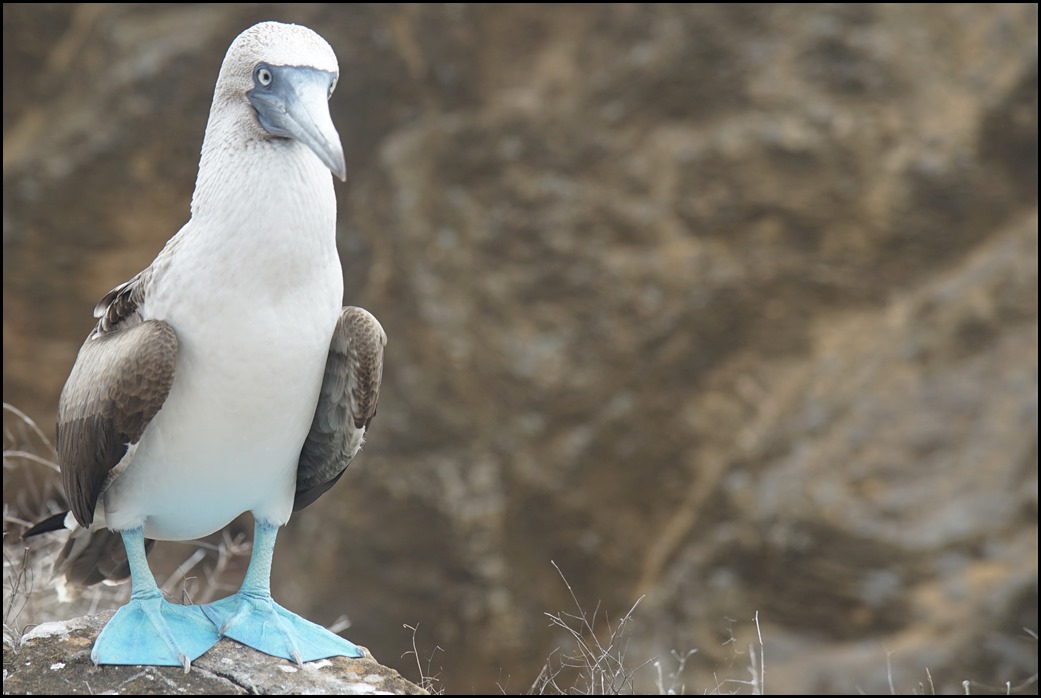
The first thing we saw as we entered Puerto Baquerizo Mereno at San Cristóbal after 5 days at sea was a sea lion perched on the stern of a catamaran- “cute!” we thought.
As we had arrived late in the afternoon, the renowned check-in officials did not bombard Tika until the following morning which was a blessing. After 5 days at sea it gave us a chance to clean up and get a good night’s sleep before the onslaught. We had heard stories of a whole gaggle of officials approaching boats before weary sailors can even get their anchors down. The Galapagos is known for its officious (and expensive) border control and it’s over-zealous conservation. We were as prepared as we could be. We took a big breath as we watched a water taxi filled to the brim with crisply starched uniforms approach us early the next morning…
There were 9 in total; two immigration officials, a customs official, an environmental officer, 2 divers, the port captain, our agent and what appeared to be a health and safety official.
The immigration guys filled in their forms, stamped our passports, welcomed us to the Galapagos and then settled into a session on their iPhones. The health and safety officer checked for life jackets, a vhf and fire extinguishers and joined his colleagues in their texting frenzies. The friendly divers inspected Tika’s hulls for an overgrowth of introduced algae and emerged with their thumbs up (Tika had been antifouled in Grenada and we scrubbed her bottoms in the San Blas Islands in anticipation of the reputed, Galapagos entry regulations)Pretty straight forward so far!
The environmental officer handed me two photocopied A4 sheets that said ‘Do not throw garbage in the sea” He had covered all bases and the sign was both in Spanish and English and they were ceremoniously mounted in prominent locations in Tika’s galley and cockpit. He was not as welcoming as the other officials and when he asked us to provide him with a torch and started opening lockers with a vengeance, we realised that the process had only just began…
….It wasn’t long before he let out a triumphant cry, called me over and excitedly showed me a single, squashed ant on the end of his surgical-gloved finger. I knew that the boat was to be fumigated (another entry requirement to prevent invasive species entering the islands) so I secretly wondered what all the fuss was about, but I played along, acting very concerned about Mr Ant. My fake concern turned to fake alarm when he explained to me that ANTS…EAT…TURTLE EGGS…I secretly wondered how he supposed the ant would make it to the shore after having survived fumigation but it was not my place to question his wisdom or authority…smile and nod, smile and nod…..
He went through every locker in both hulls and the saloon and managed to capture about 3 dead ants and a small, flying insect, all of which he placed in a zip lock bag. Later he was seen in the cockpit transferring these 4 tiny bodies into a specimen jar. Ironically, 4 hours later, after Tika had been fumigated inside and out, we returned to find a line of ants in the shower ![]() I nearly called the man and told him to come back and do it again. Got to worry about the turtle eggs after all.
I nearly called the man and told him to come back and do it again. Got to worry about the turtle eggs after all.
We are all for environmental protection and we understand that the Galapagos archipelago is home to a unique ecosystem that must be protected, however, when it is taken too far and just gets plain ridiculous we do find ourselves getting a little cynical. Happy to have the 9 officials aboard. Happy to have ensured that Tika’s hulls did not bring any non-indigenous algae into these islands. Happy (sort of..) to pay the $1700 US required for a sailing vessel to enter Galapagan waters. Happy to stick to the designated anchorages (only 3 in total across 23 islands) Happy to pay the exorbitant prices for tours, national park guides and entry fees. But waste 3 hours of my time because of a couple of ants?? now I’m annoyed.
We had to leave Tika for 4 hours as they fumigated her. The check-in process had dragged on (mainly thanks to that one man) but we were now officially checked in and could legally go ashore! It was bliss to finally stretch our legs and get out for our first explore.
Our frustration about the check-in process melted quickly. Soon we were sunning ourselves on a beach in close proximity to a bunch of statue-like marine iguanas. Comical, alien faces cocked to one side as they poised, frozen and unmoving on the sand. Baby sea lions frolicked playfully amongst swimmers in the surf and we started to get a feel for this, the oldest island of the Islas Galápagos.
Below; The anchorage at San Cristóbal
Nothing was sacred to the sea lions. Every unprotected stern step, fishing boat, paddleboard, kayak and dinghy left in or near the water became a resting place for a sea lion or two. It is always lovely to have an up close, wildlife encounter, but we soon learnt that sea lions smell seriously bad and make a huge mess. The novelty and cuteness wore off the first time we woke up to a large, male sea lion lounging upon our white cockpit cushions amidst a nasty nest of short, wiry sea lion hair, poo and the all consuming whiff of rancid fish… We still loved to watch them in the water and on the sterns of other people’s boats but, much to Jaiya’s disappointment, we decided they were no longer welcome on ours! To be honest it was hard work keeping them off the boat.
The big boardwalk facing the harbour at the town centre was lined with generous, shady, seafront kabanas and public park benches facing out to sea. The sea lions were convinced that these had been placed there for their exclusive use as a comfortable rookery and they were overrun with portly, snoozing or bleary eyed sea lions day in and day out.
Below; the fenders were meant to keep the sea lions off our boat but when it came to finding a bed for the night, these guys were persistent. They lumbered their way over the fenders and found them to be quite satisfactory pillows!
It is wonderful to meet some of the species that led to Charles Darwin’s Theory of Natural Selection after his first visit on The Beagle in 1835. The Galapagos Islands were never attached to the mainland so every animal and plant arrived here by swimming, flying or floating. Darwin found iguanas with the unique ability to swim and forage in the sea and many species that had perfectly adapted to suit each island’s environment. It was the beginning of the controversial idea of evolution.
We downloaded and watched the BBC’s ‘Charles Darwin and the Tree of Life’ documentary presented by the world’s favourite naturalist; David Attenborough. Sir Attenborough took us on an enthralling journey through Darwin’s greatest insight – that life has evolved over millions of years by natural selection. Home schooling comes alive!
“Nothing in the world makes sense- except when seen in the light of evolution” Sir David Attenborough
Below; The Galapagos Iguana; a marine reptile! I came face to face with a couple while snorkelling and they have ancient faces with attitude!
A gorgeous pelican came and hung out with us for an hour or two. The protected wildlife in the Galapagos have learnt that people are not a threat and are very relaxed and allow you get quite close.
It was around 7pm and we were just cooking dinner when a family we had just met hailed us on channel 72. “I’m not sure if you’ve been monitoring channel 16 and I don’t want to alarm you, but there has been a Tsunami warning. We are right now getting in a water taxi and heading to high ground…the port captain has advised we have 30 minutes before the wave hits”
My blood ran cold. Russel’s response was instant “We’re heading out to sea.” Kai (who coincidently, had done a school comprehension exercise on Tsunami’s just a few days before and had been interested to read about a 2m wave turning into an 18m wave as it hit shallow water) was very quick to agree with his dad “yep-we go to sea”
We got ship-shape in 2 minutes flat. I freaked out at one point as I saw Jaiya pulling in the anti-sea lion fenders we had tied to our stern steps just as we hauled anchor and took off. I was worried she would fall in while our engines were on and we were moving and I ordered her to get back into the cockpit and pulled them in myself.
We headed out of the channel with a few other large, motor boats and a pint-sized cruise ship- all moving fast. The radio was alive with other yachties passing on the warning and making similar decisions to leave port so we knew that others were not far behind. We all put on life jackets and tethered ourselves into the cockpit. It was quite frightening and our imaginations went straight to images of major Tsunami’s and devastation. I had to reassure the kids while attempting to stay calm myself.
Before we left Perth a friend had given Kai and Jaiya small, smooth, gem stone gifts with lovely little, hippy cards describing their ‘protective’ qualities. Both kids had their stones (which came in sweet, hanging pouches complete with feathers) hanging in their cabins. I hadn’t realised how much they had taken to heart the ’protective’ descriptions until Jaiya (bless her) went and got them and both kids wore them around their necks until the ordeal was over.
Nothing happened!
We went out to about 400m of water. It was a calm, beautiful evening. After a while we relaxed and unclipped our harnesses and finished cooking dinner. The port captain did get on the radio a few times to tell us that the wave was getting closer (“15 minutes away”) I had been reading about an earthquake in Japan that day and I wondered if it could have been related. Despite being miles out at sea, I tried to get internet, picked some up and read the first report about the Ecuador earthquake. We got on the PTWC (Pacific Tsunami Warning Centre) website that reported a 1.3m wave. We figured that (given a Tsunami will travel at 500km per hour) the wave would have already been and gone. We relaxed even more and ate our dinner in the cockpit overlooking the sparkling lights of the town in the distance and a stunning night out at sea. There was a fair bit of radio chatter between us boats as we bobbed around waiting to be given the all clear by the port captain.
A general call out by one yacht made me laugh…. We had probably been bobbing around for at least an hour when he came on the radio asking “umm, does anybody know why there seem to be a bunch of boats leaving the San Cristobel anchorage??” he must have received an answer because a few minutes later he was back on the airwaves making a general announcement “ all stations, all stations..there has been a platonic movement in Ecuador and there is a risk of a Tsunami… take immediate action!” Good on him for trying but us boats who had been out at sea for hours had a little giggle….
We realised then that we probably weren’t going to see any tsunami action and the whole thing seemed a lot less scary and more exciting at that point. After calculating the distance from mainland Equator and the size of the wave and the time that had elapsed, we decided to head back in without the official all clear from the port captain. We were back in port and had just dropped anchor (we stayed out in relatively deep water just in case) just as the port captain issued the all clear and the rest of the anchorage returned to port.
It was a little sobering the following morning to read about the 2000 plus deaths and to see the devastation that had occurred on the mainland.
Above left: it was not advisable to take your dinghy into shore- you would return to find it full of lolling, snorting, pooing, malting, burping, sea-lions. Because of this the local water taxis did a roaring trade. The happy taxi drivers got to know us and our boat name and a simple vhf hail to a taxi for Tika would get us a ride to shore within minutes. The short trips were a good way to meet other sailors as we did the rounds to and from anchored boats and the main dock where sea lions lazily rolled to one side to allow passengers to disembark.
Below; the endangered, giant tortoises at the tortoise reserve; their legs, necks and shells have adapted to allow them to reach the foliage on the higher shrubs found on San Cristóbal.
San Cristóbal is an island made up of 3-4 fused and extinct volcanoes. We drove up high into the volcanic mountains and hiked to the gorgeous, misty El Junco crater lake.
Below right: the red footed booby…
The sea lions had strangely humanlike facial expressions and characteristics!
We snorkelled at Kicker Rock (an immense cone of rock that juts dramatically out of the ocean) in the hope of finding hammerheads. There were reef sharks and eagle rays but, much to Kai and Jaiya’s dismay, no hammer heads in sight!
At the underwater lava tunnels we swam into caves full of black and white tipped reef sharks, played with giant turtles, followed a fever of golden rays (very cool) and even found one singular seahorse clinging to a branch in the murky depths of the seabed. Visibility wasn’t fantastic. The Galapagos are located at the intersection of three major ocean currents; perhaps the merging flow of water and the nutrient rich seas along with the volcanic soil makes for cloudy seas? It was also shockingly cold. The Galapagos is not the tropical island group you would expect to find straddling the equator. The cold Humboldt and Equatorial currents keep the water cool and the temperature cannot sustain life for coral. We donned wetsuits for the first time in a long time.
One highlight was a trip up to the north west corner of San Cristóbal where we explored Punta Pitt; where the booby birds nest. I use the term ‘nest’ lightly as it really is nothing more than a half-hearted scrape in the earth surrounded by artistically splashed guano. They pick up their gorgeous, powder-blue feet in slow, articulate movements during their entertaining courtship performance. Like most wildlife in the Galapagos, the boobies could not have cared less about our proximity to them; we sat still and close and loved observing their interactions, clownish honking, whistling and quacking. We also saw smaller, red footed boobies, nazca boobies and a buzzing colony of black, fork-tailed, sinister looking frigate birds. We saw frigates hang, suspended in airborne perches and dive bomb boobies who had been fishing. They harass their victims so much that the booby will disgorge it’s catch and with incredible speed, the frigate picks it up either in mid air or from the surface of the water. They also steal food and nesting material from each other. Pirates! The males have a striking red pouch under their bills and the females look like they are wearing stark white underpants and red or even blue-ish eye rings.
Next post; Surfing at Tortuga Beach in Santa Cruz, Galapagos
This entry was posted in The Sail.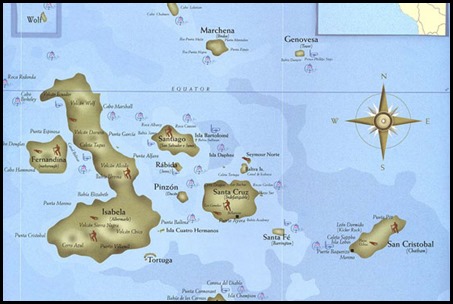
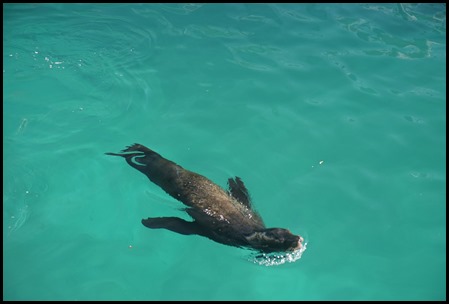
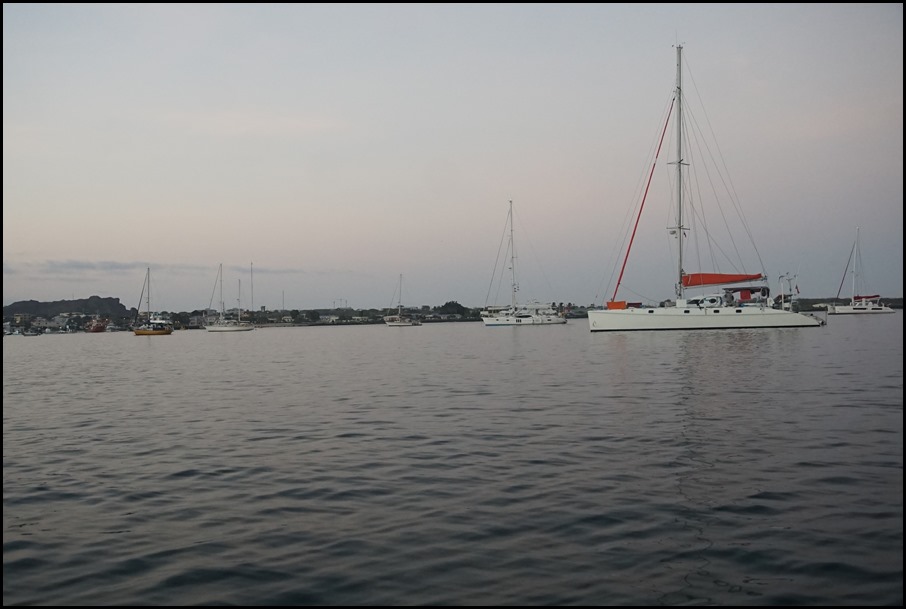
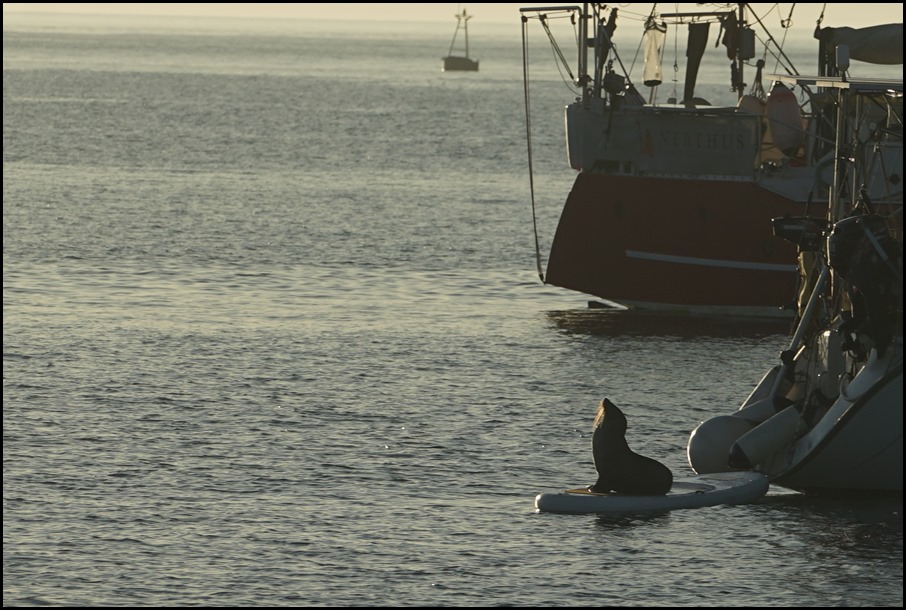
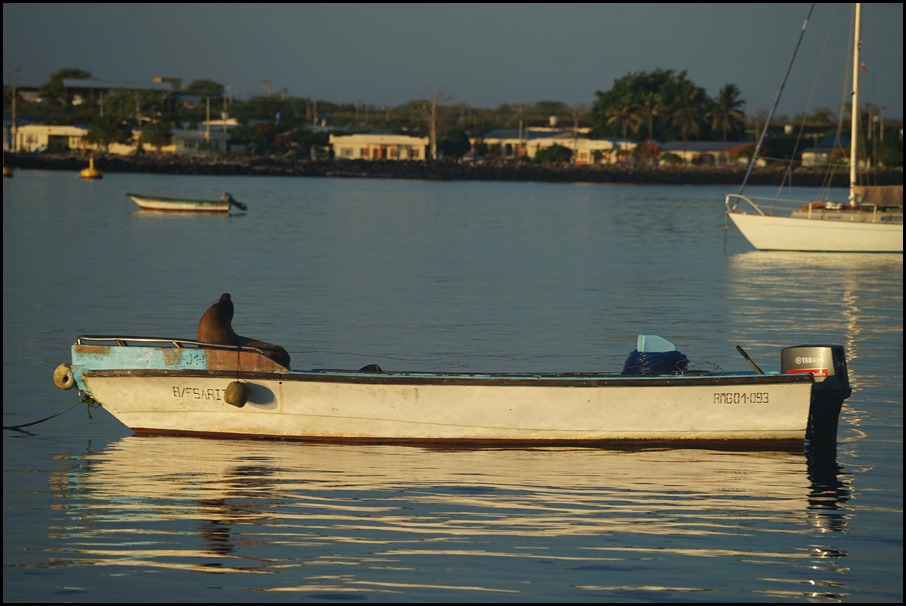
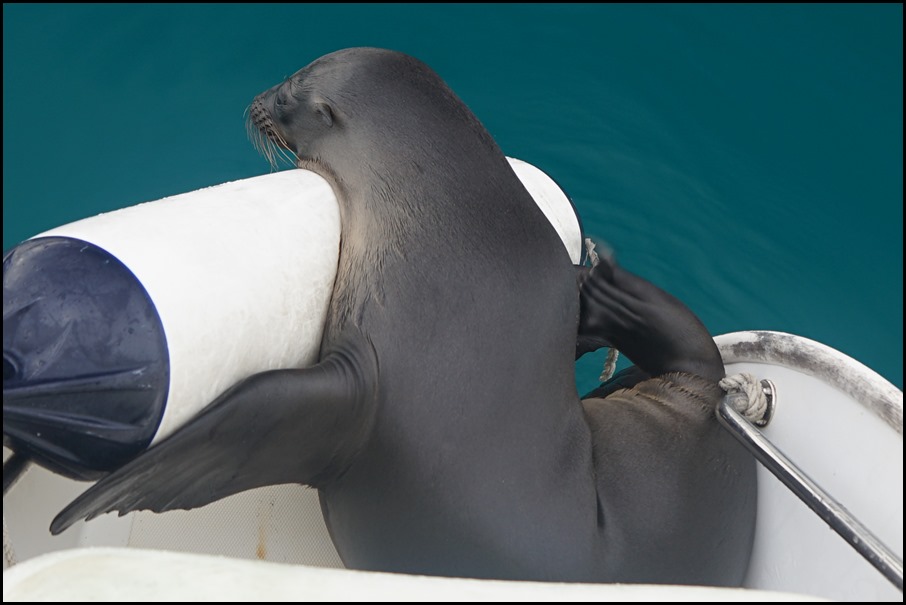
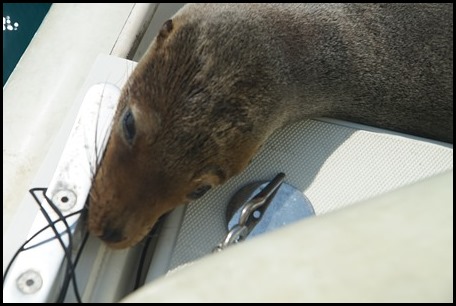
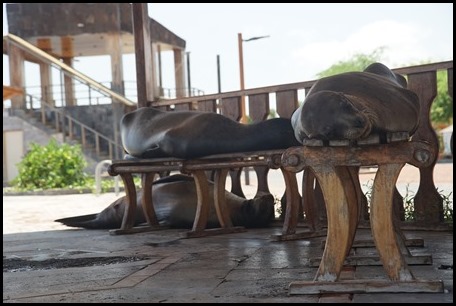
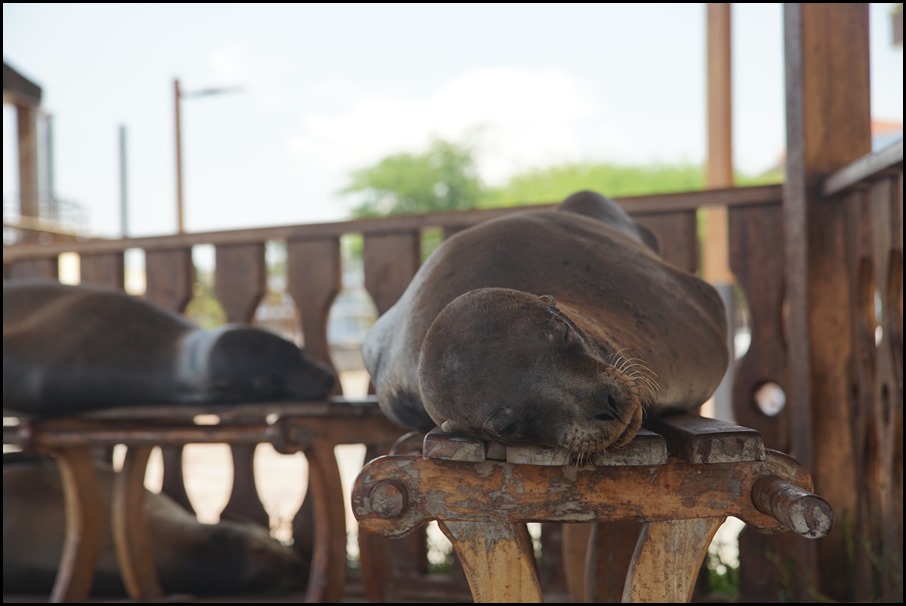
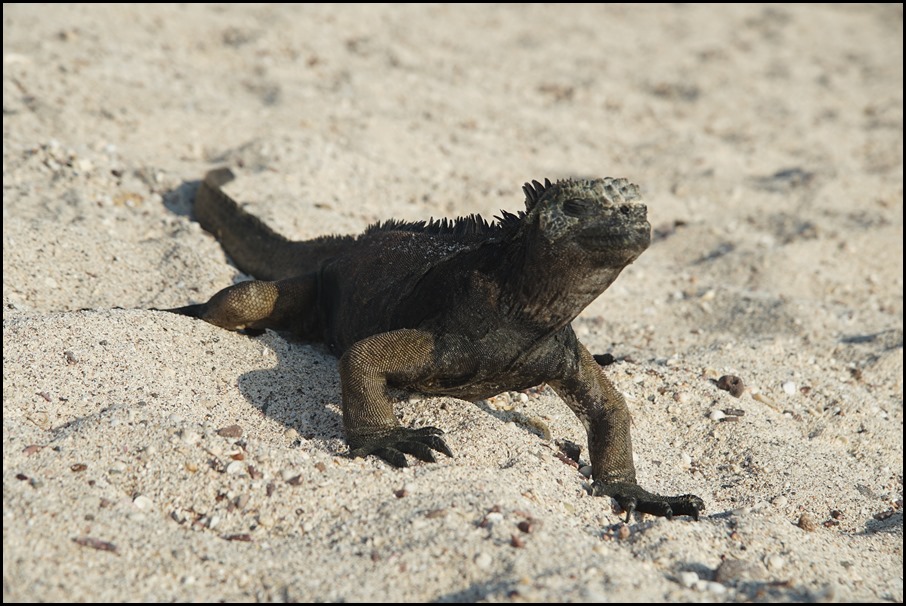
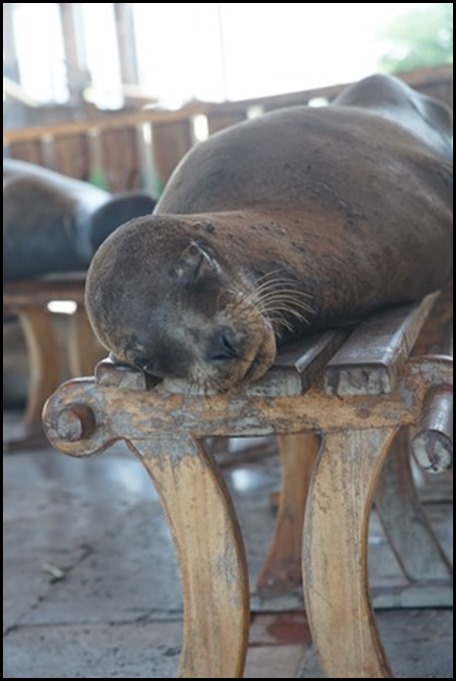
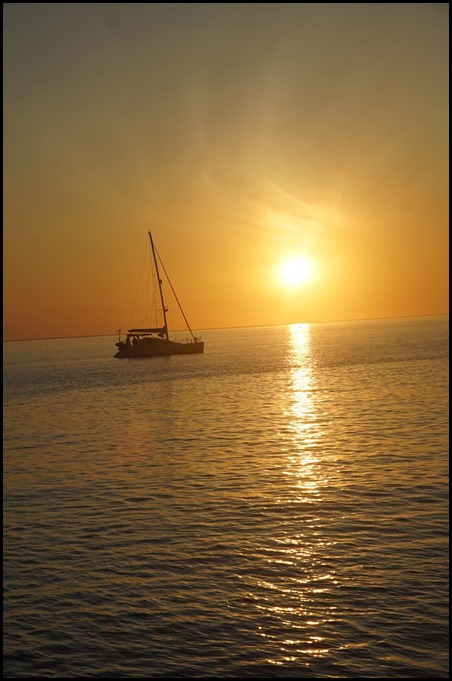
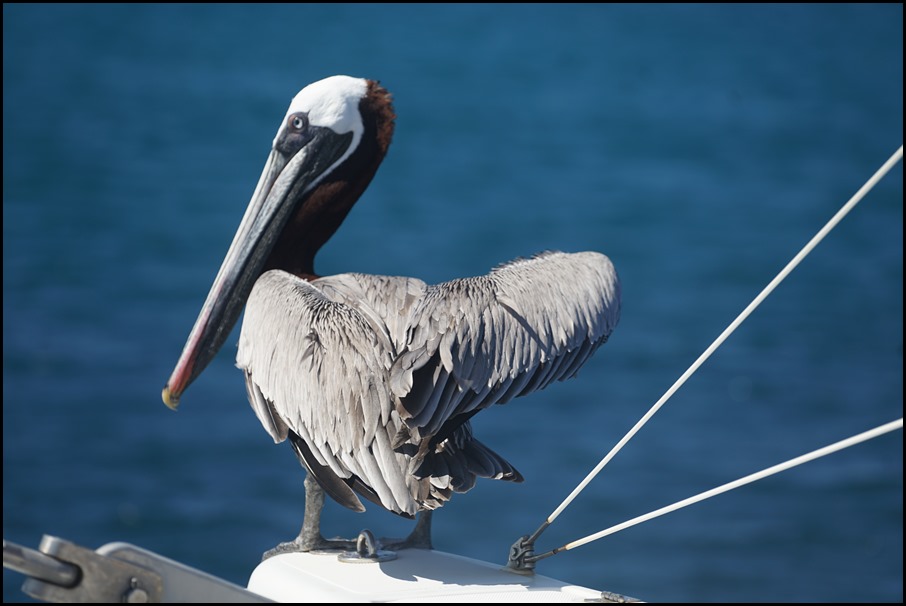
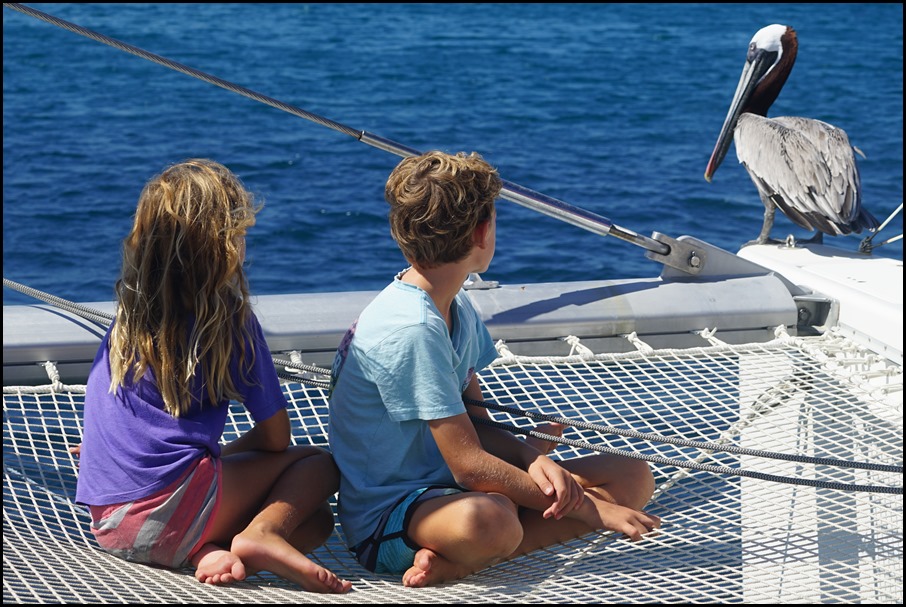
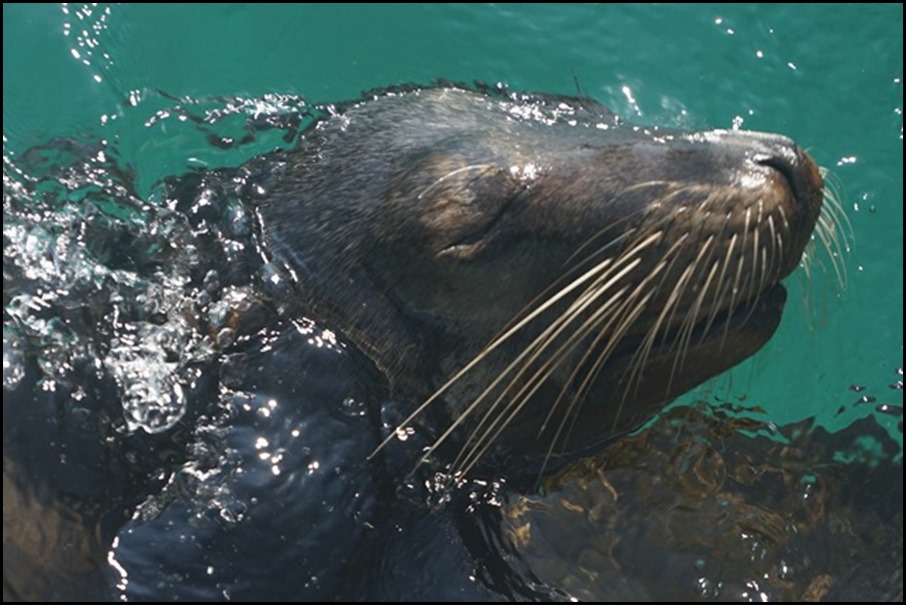
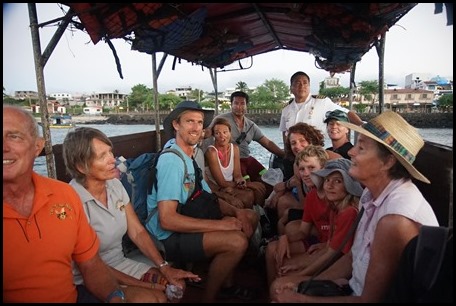
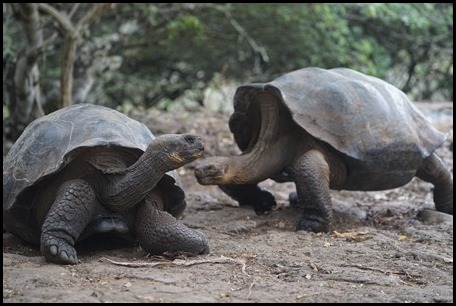
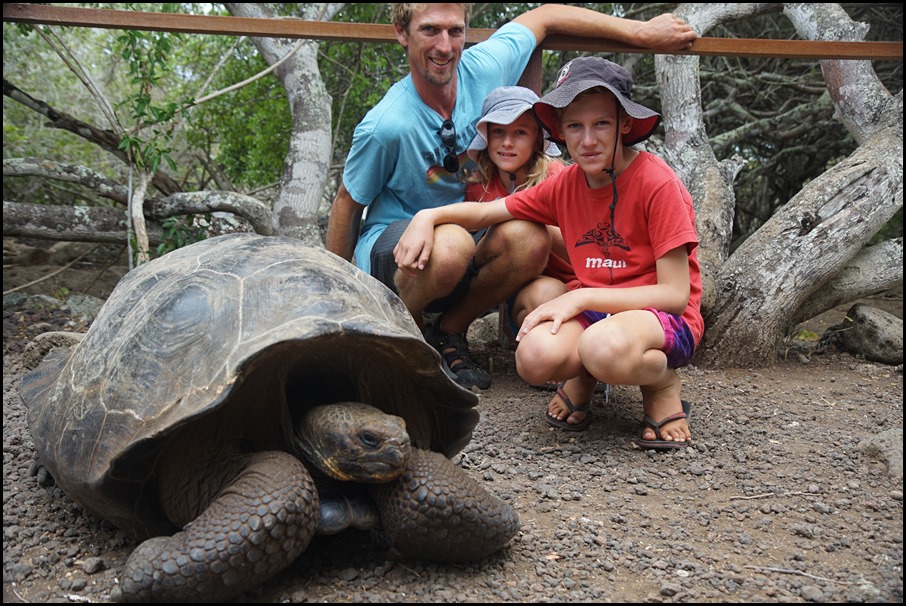
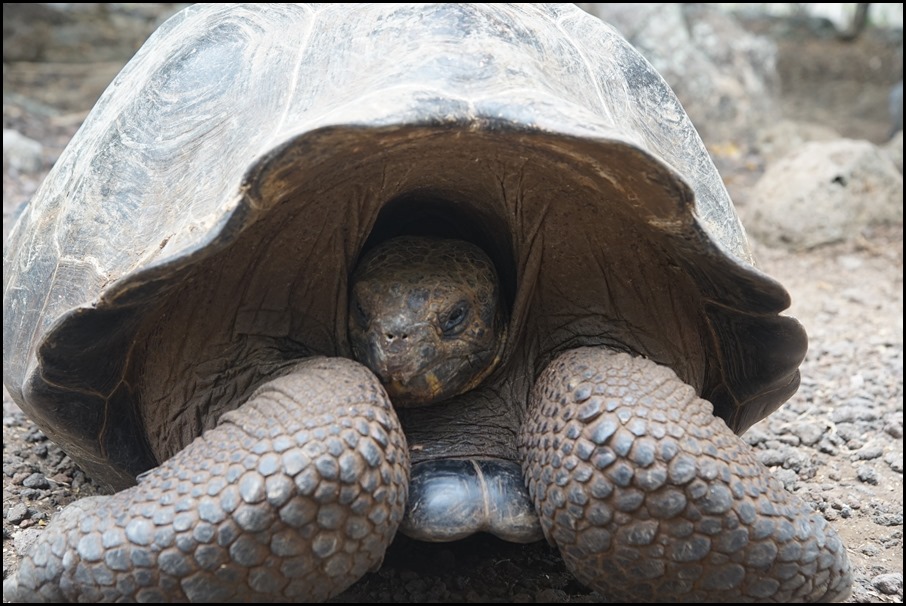
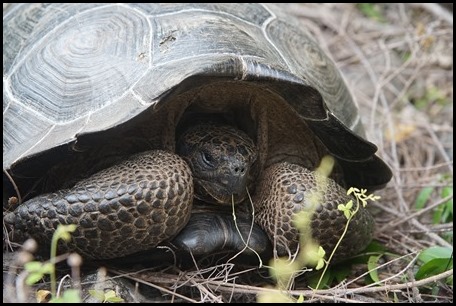
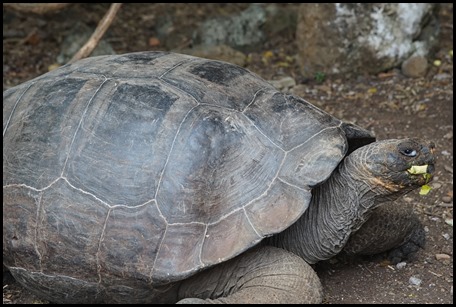
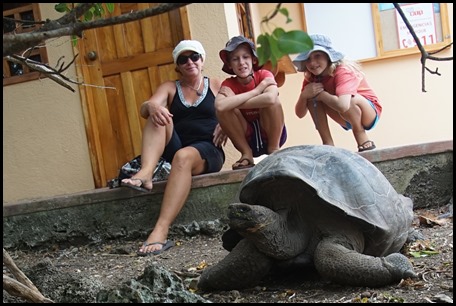
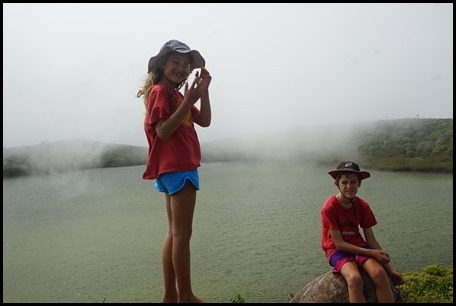
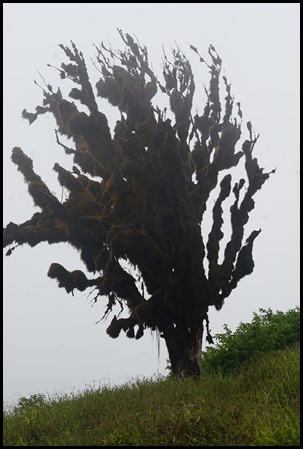
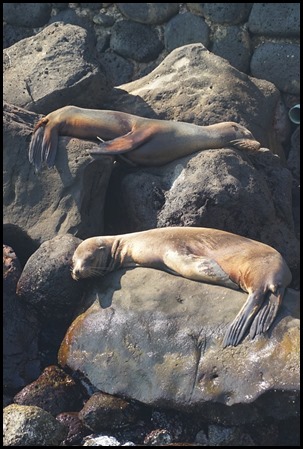
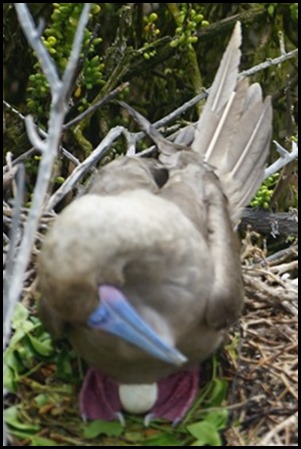
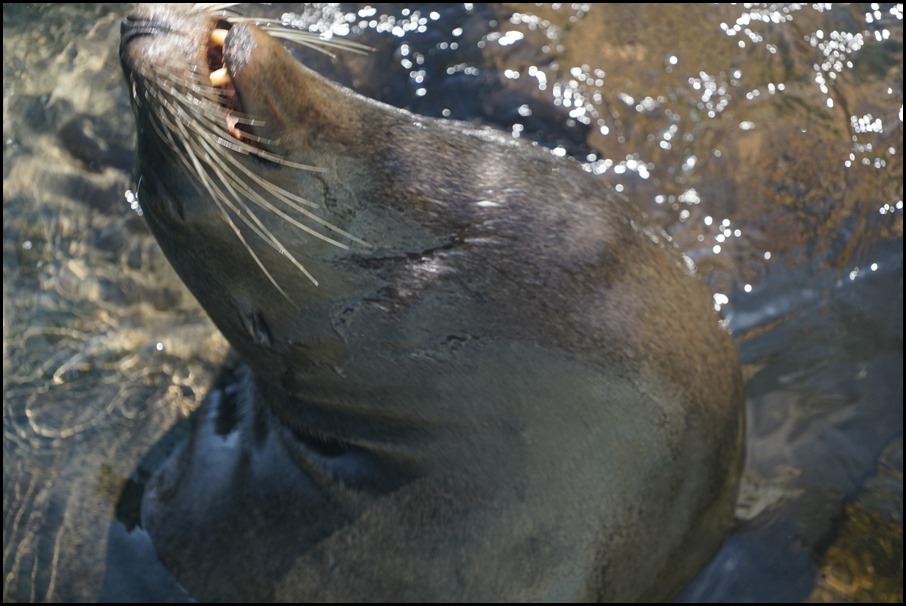

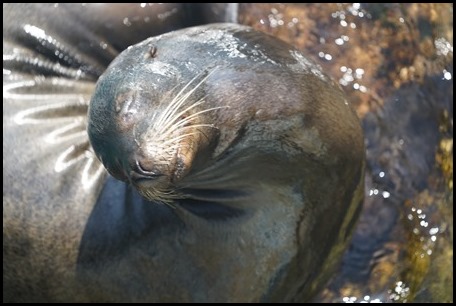
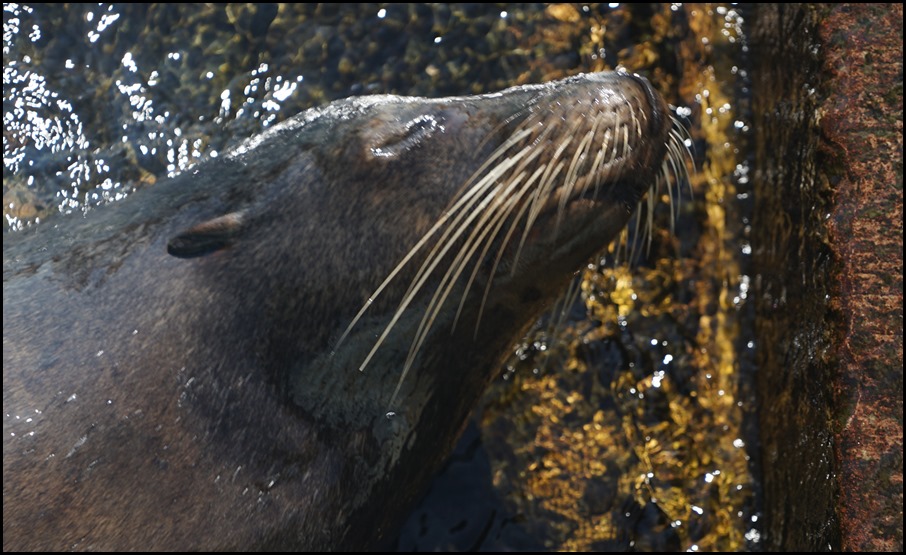
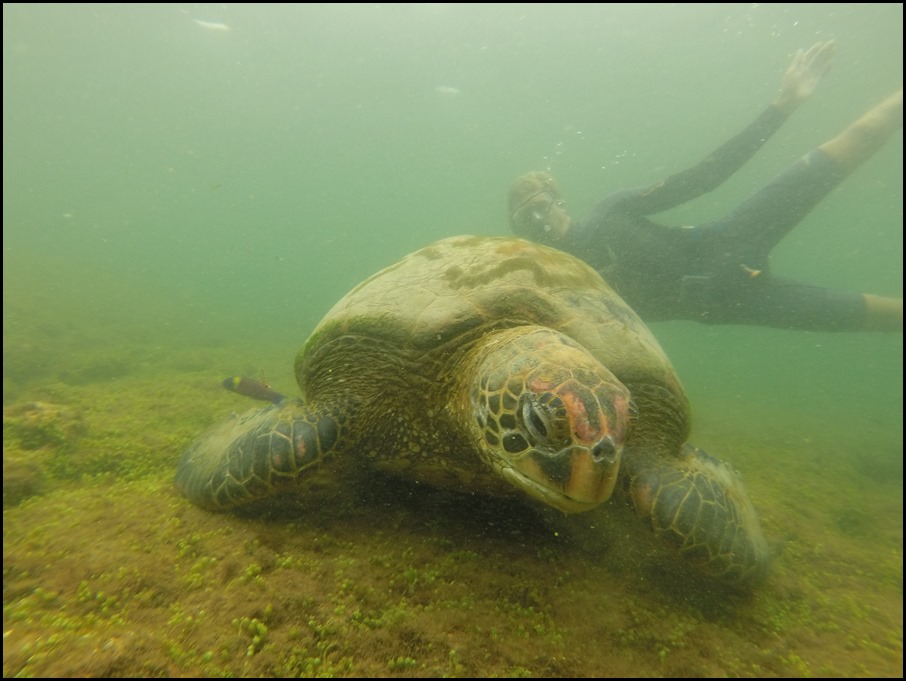
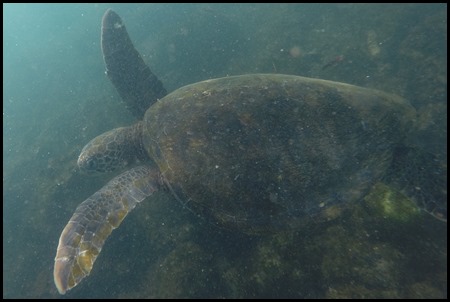
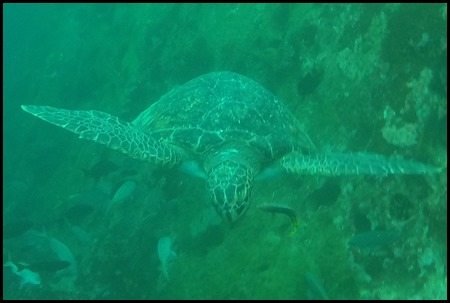
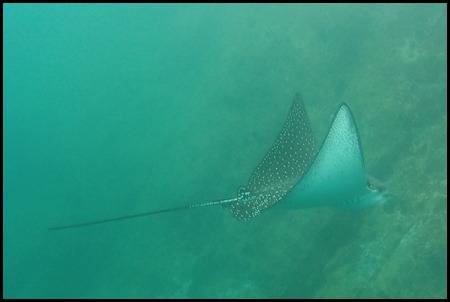

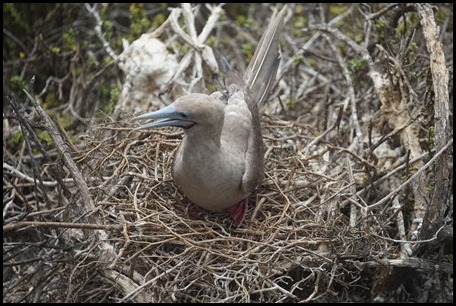
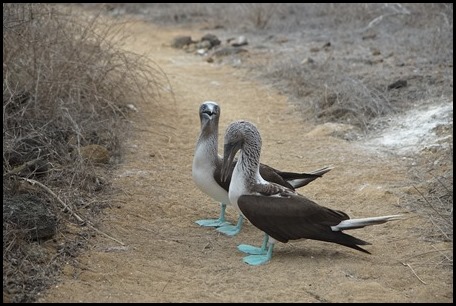
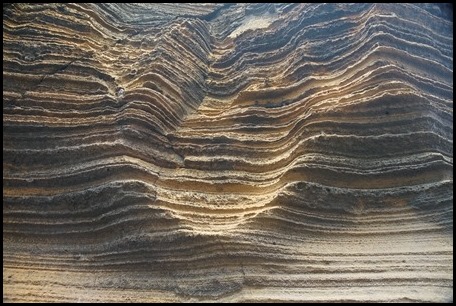
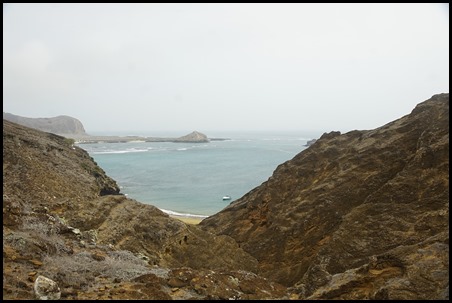
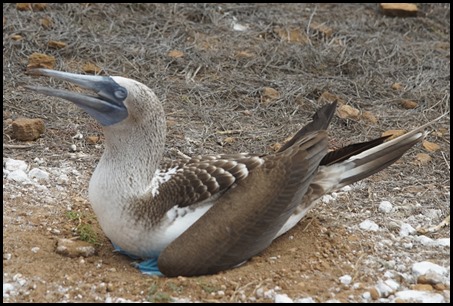
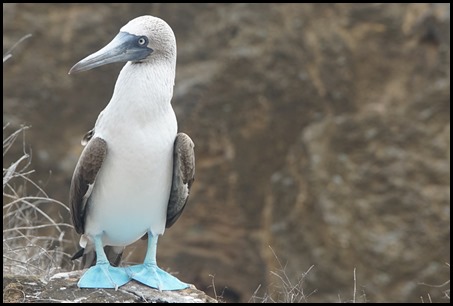
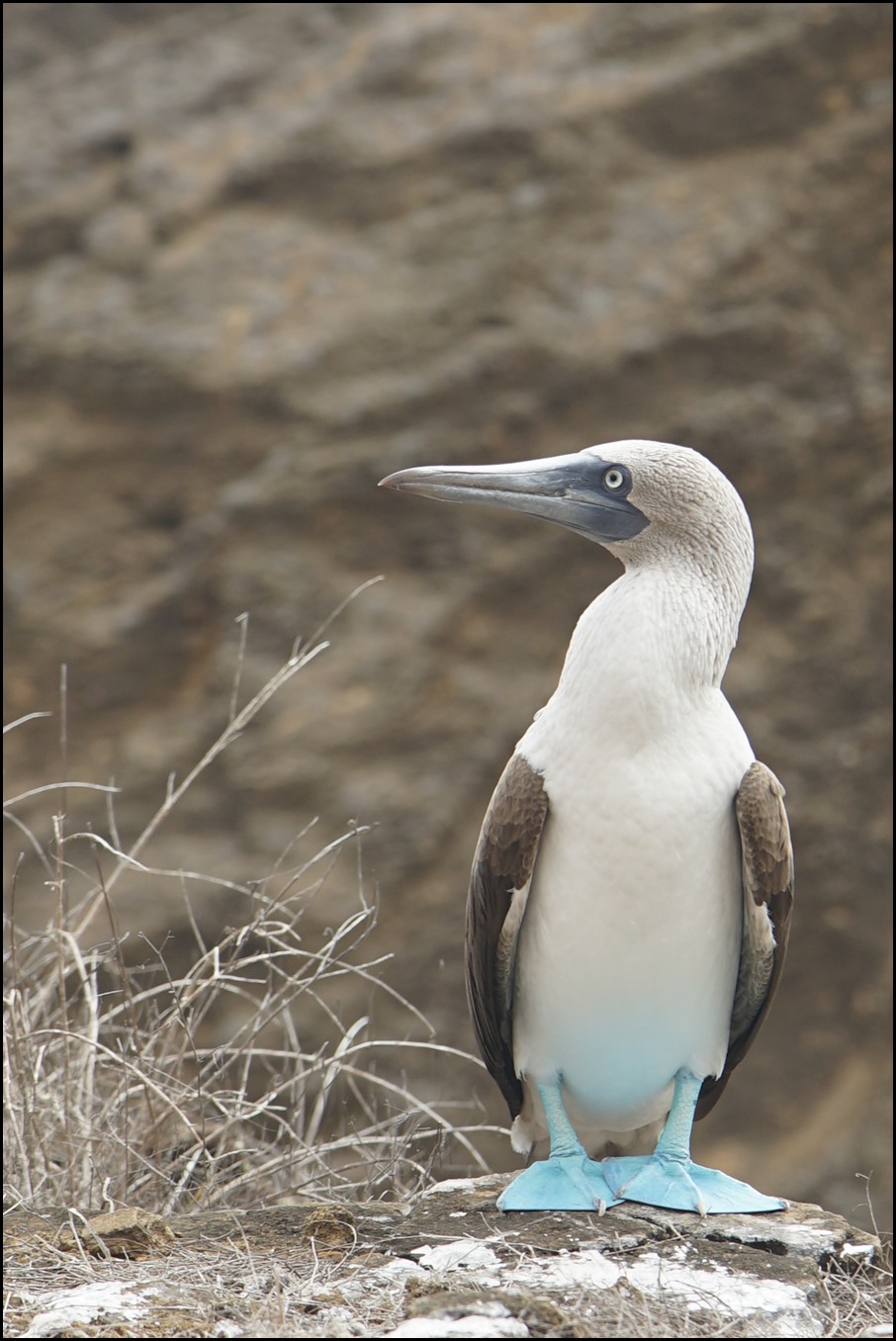
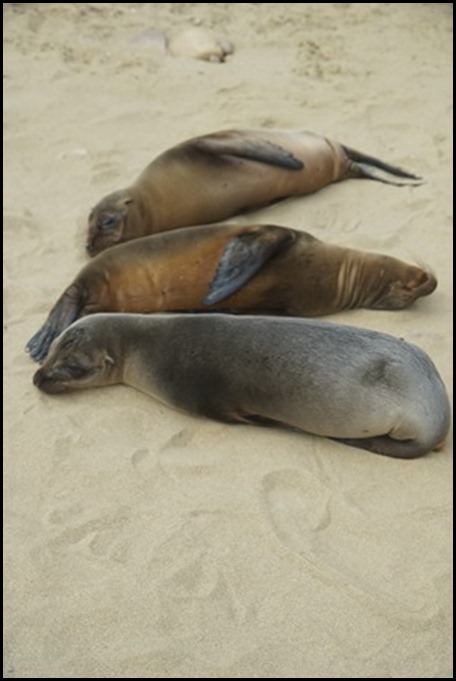
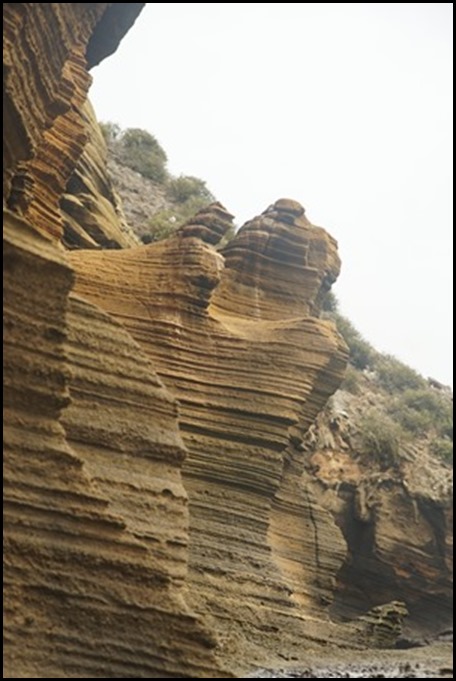
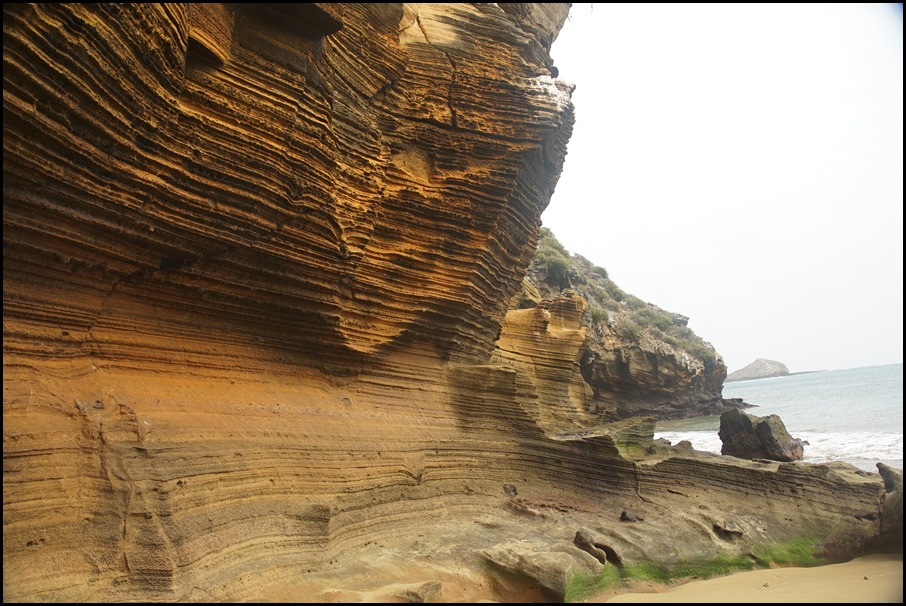
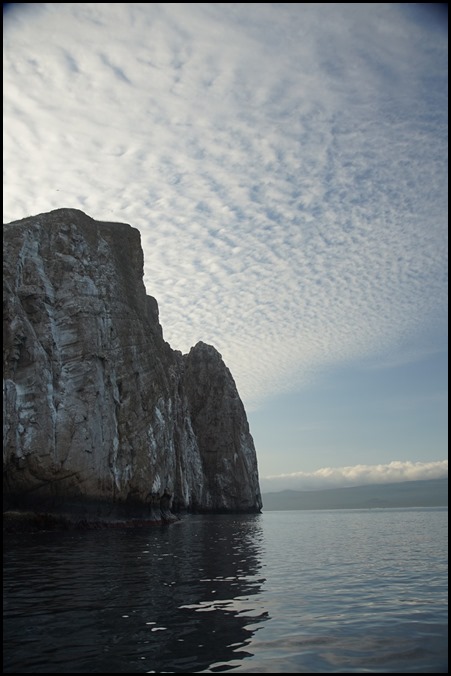
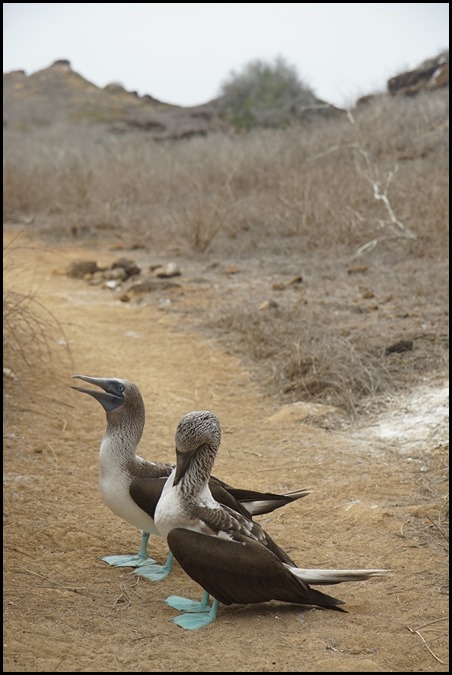
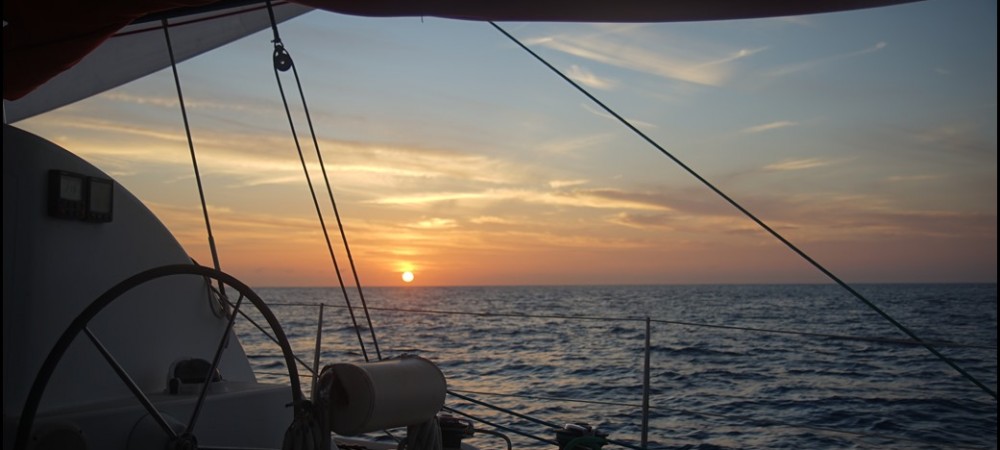
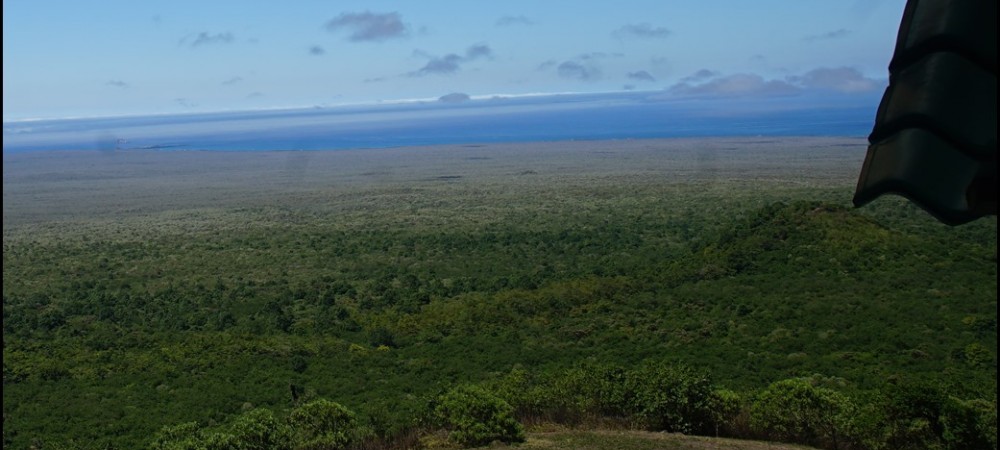
Whatever the restrictions, seems like you saw the lot. See you soon. Granny & Papa
And the bureaucracy and entry cost has multiplied by 10
Another interesting read. I don’t know if I could have endured those officials.
Yeh it’s sad that they make it so hard- we met a lot of cruisers who gave The Galapagos a miss- and the cafes/restaurants and other retail businesses were dead! I am really glad we experienced it though
I know- they really seem to be discouraging cruisers to stop there…such a shame!
Fantastic pic’s